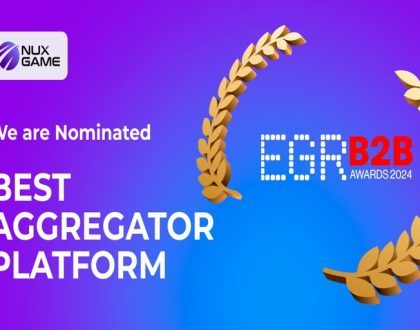The Balancing Act of Licensing and Innovation

Licensing is a pivotal strategy for businesses looking to expand their reach and collaborate with others in the market. However, navigating the landscape of licensing can be a complex and challenging task. Finding the right balance between licensing agreements and fostering innovation is crucial for companies aiming to stay competitive in fast-paced industries.
While licensing can provide opportunities for growth and increased revenue, it also comes with risks and potential challenges. Understanding how to effectively manage licensing agreements while fostering a culture of innovation within the organization is crucial for long-term success in the dynamic and ever-changing business environment.
The Basics of Licensing
What is Licensing?
With the rapid pace of innovation in today’s business world, companies often turn to licensing to capitalize on their intellectual property. Licensing is a legal agreement between the licensor (the owner of the intellectual property) and the licensee (the party that wants to use the intellectual property) that grants the licensee the right to use the licensed property under certain conditions.
Types of Licensing Agreements
Agreements
- Patent Licensing: This type of agreement involves the transfer of patent rights from the licensor to the licensee for a specific period in exchange for royalties
- Trademark Licensing: This agreement allows the licensee to use the licensor’s trademark on their products or services for a fee
- Copyright Licensing: This grants the licensee the right to reproduce, distribute, or display copyrighted material in exchange for compensation
- Exclusive Licensing: This gives the licensee exclusive rights to use the licensed property within a specific market or territory
- Non-Exclusive Licensing: In this agreement, the licensor can grant rights to multiple licensees to use the licensed property
The terms of the agreements can vary widely based on the needs and goals of both parties. The licenser typically receives royalties or a flat fee in exchange for granting the licensee the right to use the intellectual property.
Innovation as a Business Imperative
Little can a business thrive in today’s highly competitive and rapidly evolving market without prioritizing innovation. Innovation is not just a buzzword; it is a strategic imperative for businesses looking to stay ahead of the curve and drive sustainable growth. By fostering a culture of creativity, experimentation, and continuous improvement, companies can unlock new opportunities, streamline processes, and deliver cutting-edge products and services that meet the ever-changing needs of consumers.
The Role of Innovation in Growth
Businesses that prioritize innovation are better positioned to adapt to market disruptions, identify new revenue streams, and outperform competitors. Innovation fuels growth by enabling companies to differentiate themselves, enhance customer experiences, and seize untapped market potentials. It is a key driver of organic expansion and a catalyst for long-term success in today’s dynamic business landscape.
Barriers to Innovation in Established Companies
Role While innovation is crucial for sustained success, many established companies face significant barriers when trying to foster a culture of innovation. Organizational inertia, risk aversion, and resistance to change can impede the implementation of new ideas and stifle creativity. Additionally, siloed departments, bureaucratic processes, and a lack of resources dedicated to innovation can hinder progress and limit the ability of companies to stay competitive in the market.
For instance, established companies may struggle to allocate time and resources for innovation amidst daily operational demands. This short-term focus can lead to a myopic vision that neglects future opportunities and innovation initiatives. Overcoming these barriers requires a proactive approach, leadership support, and a willingness to challenge the status quo to drive meaningful change and foster a culture of innovation within the organization.
The Interplay Between Licensing and Innovation
How Licensing Can Drive Innovation
Many companies use licensing agreements as a strategic tool to drive innovation in their industries. By entering into licensing agreements with other businesses, organizations can access new technology, expertise, and intellectual property that they may not have developed internally. This collaboration can lead to the creation of new products, services, and processes that benefit both parties involved.
On the flip side, licensing can also provide a source of revenue for companies that have valuable intellectual property but may not have the resources to bring products to market themselves. By licensing their technology or patents to other companies, they can generate income while still focusing on their core competencies.
When Licensing Can Hinder Innovation
On the other hand, there are instances where licensing agreements can actually hinder innovation. When companies become too reliant on licensing technology from others, they may lose the incentive to invest in research and development internally. This can stifle creativity and limit the company’s ability to differentiate itself in the marketplace.
Another concern is the potential for licensing agreements to create barriers to entry for new players in the industry. If a few key players control crucial technologies through licensing agreements, it can be difficult for smaller companies to compete. This lack of competition can lead to monopolistic practices and price-fixing, ultimately harming consumers and limiting overall innovation in the industry.
Legal and Ethical Considerations
Intellectual Property Law Fundamentals
To navigate the complex terrain of licensing and innovation, it is crucial to consider the fundamental principles of intellectual property law. Understanding the various forms of intellectual property, such as patents, trademarks, copyrights, and trade secrets, is crucial for ensuring that your innovative ideas are legally protected. Patents protect inventions, trademarks safeguard brands and logos, copyrights cover original creative works, and trade secrets protect confidential information.
Ethical Practices in Licensing and Innovation
With the rapidly evolving landscape of technology and business, ethical considerations play a vital role in licensing and innovation. It is crucial to uphold ethical practices to build trust and credibility in the industry. Adhering to ethical standards not only fosters a positive reputation but also reduces the risk of legal disputes and damages to your brand. Respecting the intellectual property rights of others, maintaining transparency in licensing agreements, and avoiding conflicts of interest are key ethical considerations to keep in mind.
It is important to note that ethical lapses in licensing and innovation can have far-reaching consequences, impacting not only your business but also your reputation within the industry. Engaging in ethical practices is not only a legal requirement but also a strategic decision that can lead to long-term success and sustainability for your organization.
Strategies for Balancing Licensing and Innovation
Best Practices for Licensing Agreements
Not all licensing agreements are created equal. Companies must carefully consider the terms and conditions of any licensing agreement to ensure a fair balance between protecting their intellectual property (IP) and fostering innovation. Best practices for licensing agreements include clearly defining the scope of the license, setting clear expectations for royalties or fees, establishing mechanisms for resolving disputes, and specifying the duration of the agreement.
Fostering an Innovative Culture While Managing IP
To foster an innovative culture while effectively managing intellectual property, companies must create a collaborative environment where employees feel encouraged to brainstorm and experiment without the fear of their ideas being stolen or misused. This can be achieved through regular communication about the importance of IP protection, offering incentives for innovation, and providing training on intellectual property rights and responsibilities.
Innovative businesses that strike the right balance between licensing and innovation are positioned to stay ahead of the competition and drive growth through groundbreaking products and services while protecting their valuable IP assets.
Industry-Specific Dynamics
Licensing and Innovation in Technology Sector
Your technology sector is driven by constant innovation and rapid advancements. Any company operating in this sector must carefully navigate the complexities of licensing to stay ahead of the competition. Balancing the need to protect intellectual property through licensing agreements while fostering innovation is a delicate task. Companies often opt for cross-licensing agreements to access each other’s technologies, enabling them to bring new products to market faster.
Adaptation of Licensing Strategies in Pharmaceuticals
Strategies in the pharmaceutical industry must be carefully tailored to comply with stringent regulations and protect valuable intellectual property. The licensing landscape in this sector is characterized by complex patent portfolios and the need for strategic alliances to drive innovation. Any pharmaceutical company looking to expand its market share must adapt its licensing strategies to navigate these challenges successfully.
The pharmaceutical industry relies heavily on licensing agreements for collaboration and market access. Companies often engage in licensing deals to gain access to new markets, technology, or drug candidates. These partnerships can help streamline the drug development process and bring innovative treatments to patients faster.
Summing up
Ultimately, the balancing act of licensing and innovation is crucial for companies to navigate in order to thrive in today’s competitive market. By strategically leveraging licensing opportunities, companies can expand their reach, access new markets, and enhance their product offerings. At the same time, it is important for companies to prioritize innovation as a core driver of growth and differentiation. Balancing these two elements effectively can help companies stay ahead of the curve and maintain a competitive edge.
Recommended Posts

NuxGame Receives Nomination at EGR B2B Awards
April 29, 2024

Livespins Expands Portfolio with Nolimit City
April 29, 2024

Casino Payments – Fast Facts
April 29, 2024
